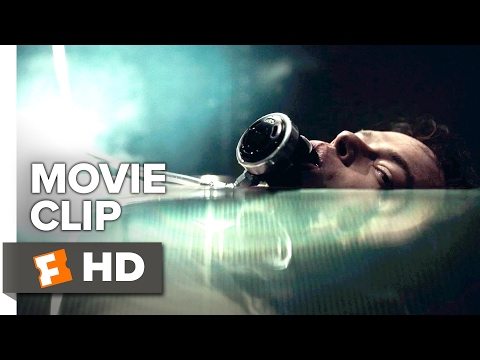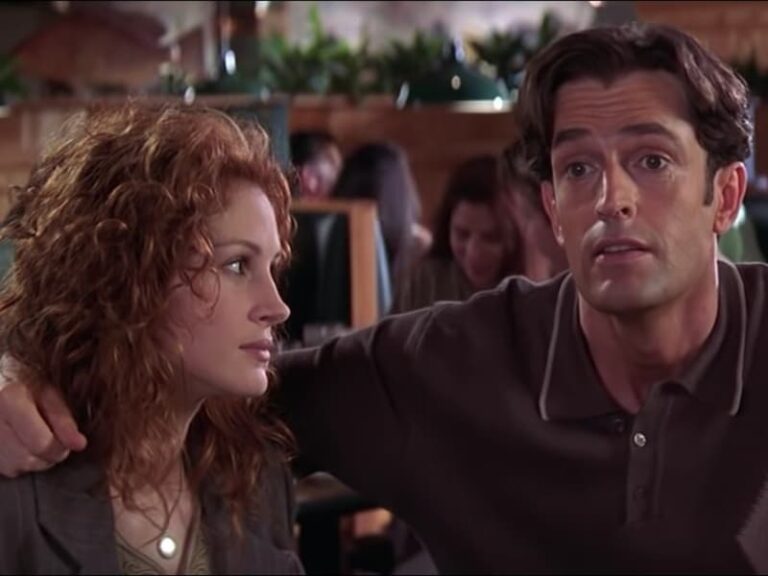Was ‘Cure for Wellness’ Too Gonzo for Its Own Good?
At the start of Gore Verbinski’s “A Cure for Wellness,” the CEO of a major corporation has gone missing and a workaholic bureaucrat named Lockhart (Dane DeHaan) has been sent to find him.
It’s even more dire than that.
The missing man, named Roland Pembroke, is believed to have gone to some bizarre Swiss health center and has either dropped all contact with the outside world or is perhaps being kept there against his will.

Pembroke’s company is in the midst of a vital corporate shakeup. Lockhart’s mission, in which he has to journey from New York to this isolated sanitarium in the Swiss alps, and bring back Pembroke no matter what, is a do-or-die undertaking.
We know from the opening scene that there’s inevitably something weird about all of this, as well as something to do with tainted water (from the opening scene, which is striking but never referenced again and comes off like a non-sequitur).
Once Lockhart finally arrives at his destination, he enters a dark castle on a hill that is part getaway resort, part healing cult compound and something of a lush hospital. Clients of the sanitarium come there willingly, seeking “the cure.”
It doesn’t take Lockhart long to locate Pembroke, nor the oddball running the place, an imposing doctor named Vollmer (Jason Isaacs). There’s also Hannah, a beautiful but lost ingénue (Mia Goth, so perfect in this and the “Suspiria” remake), whose presence is an entirely different kind of warning sign.

Verbinski (who co-wrote the film with Justin Haythe) has fashioned a confident, sumptuous horror film, paced like a novel and overflowing with unforgettable imagery.
Clearly made by a filmmaker working at the peak of his powers (even after “The Lone Ranger,” no less), Verbinski unleashes his abilities to craft startling imagery in service of a wacko narrative. This is all-stops out, large scale, disturbing and uncompromised, hardly what you’d expect of a lavish, studio-released genre film.
There is no visibility of audience coddling. It’s also overstuffed and leading man Dehaan, at first, seems miscast for the demanding lead.
From the start, the music gives a nod to the iconic score to “Rosemary’s Baby,” the set-up is somewhat akin to “Shutter Island,” and everything from “The Island of Doctor Moreau,” “The Abominable Doctor Phibes” and Gaston Leroux are sampled.
There’s also a big reveal that’s right out of “House of Wax,” as well as a tragic backstory with a key unveiling that mirrors the sad flashback conceit of “The Game.” This latter touch is a key plot component, as “A Cure for Wellness,” like David Fincher’s 1997 mystery, is basically about the fear of becoming our father.

However, the narrative overall is a re-working of Bram Stoker’s “Dracula,” with Lockhart a stand-in for Stoker’s Jonathan Harker (which makes the casting of the young DeHaan especially right), and Isaacs’ Volmer is clearly (in more ways than one) a reworking of Count Dracula.
Likewise, Goth’s Hannah is a Mina/Lucy equivalent, just as the removed, Swiss spa setting (and the overall point of its operation) has a narrative kinship with the goings-on at Castle Dracula.
While lacking an obvious Van Helsing stand-in, the details of hero’s journey are similar in theme — only by immersing himself (literally) in this forever-young atmosphere is Lockhart able to face the villain and realize the full extent of his time-spanning and sinister plan. The emphasis on water over Stoker’s focus on blood is addressed in a bit of dialogue: someone notes, “this obsession with blood…the body is 65 percent water!”

Despite all the works that have clearly inspired this one, there is a nonetheless an immediacy to it and unlocking all the doors to the central mystery is extremely pleasurable. Despite excelling from making pirate movies (specifically the first three Captain Jack Sparrow adventures for Disney), offbeat children’s films (“Rango” and “Mousehunt”) and polished oddities (“The Weather Man” and “The Mexican”), Verbinkski clearly excels at the horror genre.
An instant flop when released in 2017, “A Cure for Wellness” took heat for its self-indulgent, 146-minute running time. Indeed, there is an extended sequence where Lockhart and Hannah casually leave the sanitarium and get into trouble in a local pub; Had the needless bar fight scene been excised, the voluptuous length would have been more excusable.
There’s also a bit where Lockhart escapes from a dentist chair and somehow ends up in a getaway car. It’s such a stretch, it’s almost insulting (did they film his efforts to flee and cut it?).
These two missteps at the editing level (the former scene would have helpfully shaved off about 13-minutes, while the latter ought to have been tightened) are the chief flaws in an otherwise bravura work.
DeHaan had this and Luc Besson’s high-profile bomb “Valerian and the City of a Thousand Planets” (in which he also starred) open the same year, which likely set back his budding career. It’s too bad, as he’s an interesting actor and goes all in with Verbinski’s tendency to take things extremely far.
The same goes for Isaacs, Goth and a wonderful Celia Imrie (best known for the “Bridget Jones” movies). The cinematography, sets, sound and score are all award worthy.
RELATED: ‘Twin Peaks’ at 30: The Essential Viewing Guide
Some scenes are so shocking, I suspect audiences who gave this a shot in theaters may have jumped ship even before the bonkers, operatic finale. The whole thing is so richly atmospheric and creepy, it will even grab viewers who aren’t fully engaged in the central mystery.
There are dozens of truly wacko moments in “A Cure for Wellness,” like a horse that seemingly shows up in a sauna (not to mention a grisly bit involving an equestrian later on). There’s also Lockhart looking at his watch the very moment it stops working and a flashback that involves, a true cinematic first, a young boy playing with a RoboCop action figure.
To the screenplay’s credit, it seems like every loose end is tied up in the end. Verbinski’s vivid, lushly nightmarish journey is a jolting experience. An eventual cult following is a given. This is exactly the kind of untamed work Verbinski needs to be making and not Mouse House epics with pirates or cowboys.
The post Was ‘Cure for Wellness’ Too Gonzo for Its Own Good? appeared first on Hollywood in Toto.



![Le Mort Homme [Dead Man’s Hill] in Chattancourt, France](https://fellinis.com.au/wp-content/uploads/2020/12/le-mort-homme-dead-mans-hill-in-chattancourt-france.jpg)
